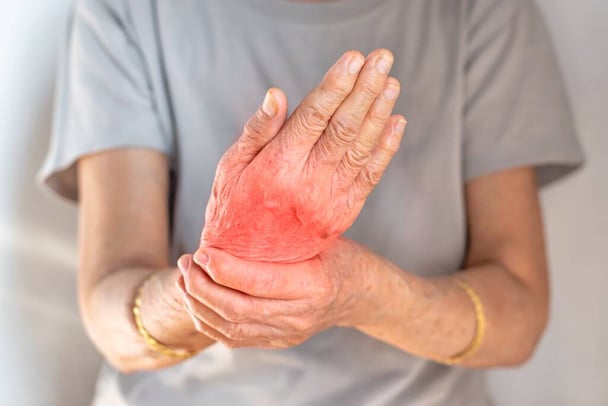Cutaneous Systemic Lupus Erythematosus (SLE) Treatment at Rheumatology DRHC Dubai
At Dr. Rami Hamed Medical Center, Dubai, our team of rheumatologists specializes in the diagnosis and treatment of cutaneous systemic lupus erythematosus (SLE). We are committed to providing our patients with personalized care and effective treatment options to help them manage their condition and improve their quality of life.
Causes and Risk Factors
Cutaneous systemic lupus erythematosus (SLE) is a chronic autoimmune disease that affects the skin and other organs. The exact cause of cutaneous SLE is not known, but it is believed to be a combination of genetic, environmental, and immune system factors. Several factors can increase the risk of developing cutaneous SLE, including:
- Gender: Cutaneous SLE is more common in women than men.
- Age: Cutaneous SLE can occur at any age, but it is most commonly diagnosed in people between the ages of 15 and 45.
- Family history: Having a family history of cutaneous SLE or other autoimmune diseases increases the risk of developing the condition.
- Ethnicity: Cutaneous SLE is more common in people of African, Asian, and Hispanic descent.
- Environmental factors: Exposure to certain environmental factors, such as ultraviolet (UV) light, can trigger cutaneous SLE in some people.
- Medications: Certain medications, such as anti-seizure drugs and blood pressure medications, can trigger cutaneous SLE in some people.
Symptoms
The symptoms of cutaneous SLE can vary from person to person and may come and go over time. Common symptoms of cutaneous SLE include:
- Butterfly-shaped rash on the face
- Red, scaly patches or sores on the skin
- Photosensitivity (sensitivity to sunlight)
- Joint pain and swelling
- Raynaud's phenomenon (cold fingers and toes)
- Oral ulcers
- Hair loss
- Fatigue
Diagnosis
Diagnosing cutaneous SLE typically involves a physical examination and a review of the patient's medical history. In some cases, tests such as blood tests, skin biopsies, and imaging tests may be performed to determine the extent of the disease and rule out other conditions.
Treatment Options
Treatment for cutaneous SLE depends on the specific symptoms and how severe the condition is. Treatment options may include:
- Medications: Several medications are available to help reduce inflammation and suppress the immune system.
- Lifestyle changes: Eating a healthy diet, exercising regularly, and avoiding smoking and excessive alcohol consumption can help manage cutaneous SLE symptoms.
- Supportive care: Physical therapy, occupational therapy, and counselling can help manage symptoms and improve quality of life.
When to Seek Medical Advice
If you are experiencing symptoms of cutaneous SLE, it is important to see a rheumatologist for a proper diagnosis and treatment plan.
Complications
Complications of cutaneous SLE may include scarring, pain, discomfort, and an increased risk of infection or transmission to sexual partners.
If you are concerned about cutaneous SLE or are experiencing symptoms of the condition, it is important to see a rheumatologist for a proper diagnosis and treatment plan. Contact us today to schedule an appointment and take the first step towards managing your condition and improving your quality of life.

FAQs
Q: What are the causes of cutaneous SLE?
A: The exact cause of cutaneous SLE is not known, but it is believed to be a combination of genetic, environmental, and immune system factors.
Q: What are the symptoms of cutaneous SLE?
A: The symptoms of cutaneous SLE can vary from person to person and may come and go over time. Common symptoms include a butterfly-shaped rash on the face, red, scaly patches or sores on the skin, photosensitivity, joint pain and swelling, Raynaud's phenomenon, oral ulcers, hair loss, and fatigue.
Q: How is cutaneous SLE diagnosed?
A: Diagnosing cutaneous SLE typically involves a physical examination and a review of the patient's medical history. In some cases, tests such as blood tests, skin biopsies, and imaging tests may be performed to determine the extent of the disease and rule out other conditions.
Q: What are the treatment options for cutaneous SLE?
A: Treatment depends on the specific symptoms and how severe the condition is. Medications, lifestyle changes, and supportive care can help manage symptoms and improve quality of life.
Q: When should I seek medical advice for cutaneous SLE?
A: If you are experiencing symptoms of cutaneous SLE, it is important to see a rheumatologist for a proper diagnosis and treatment plan.
Q: What are the complications of cutaneous SLE?
A: Complications may include scarring, pain, discomfort, and an increased risk of infection or transmission to sexual partners.










